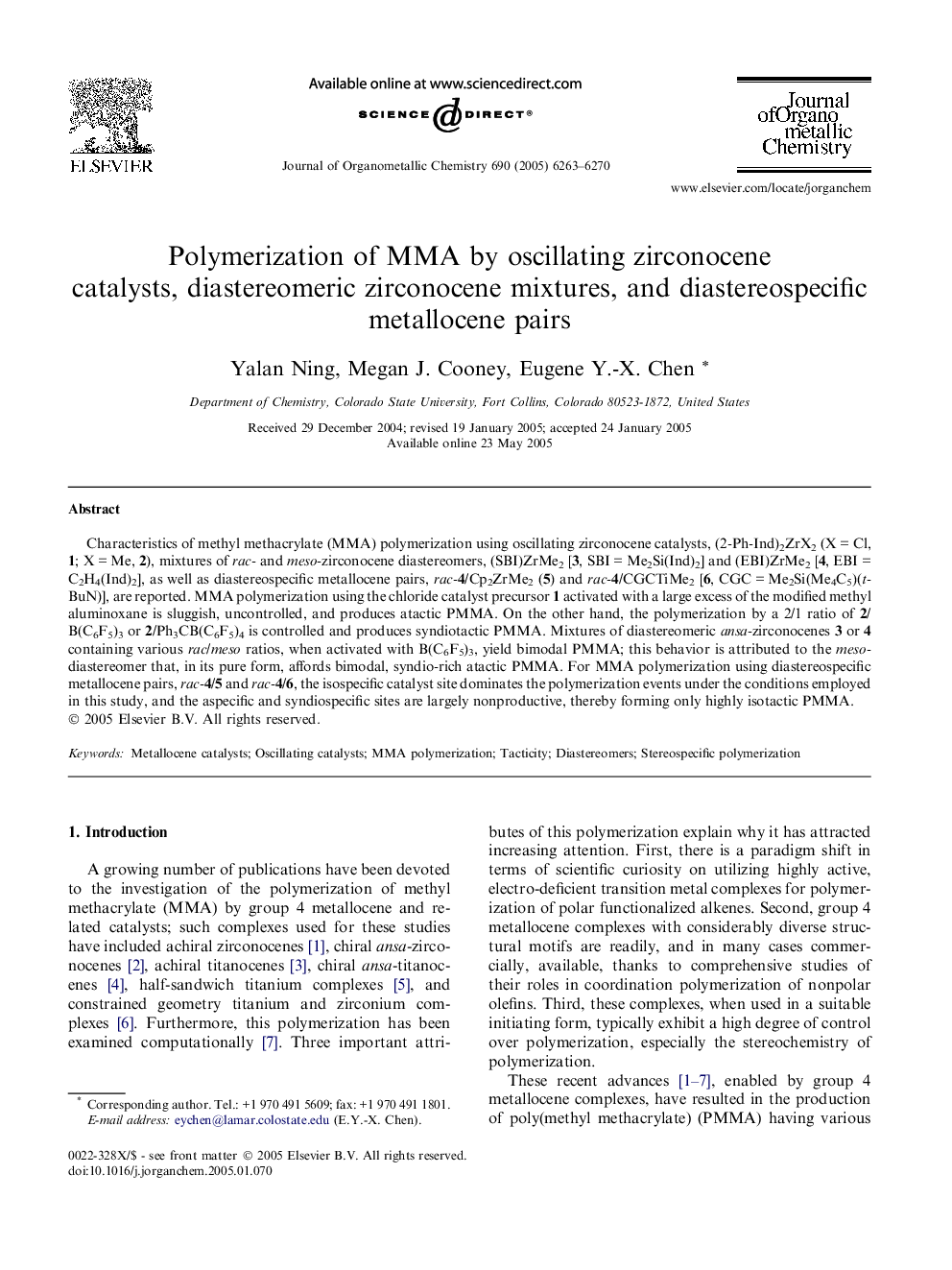| Article ID | Journal | Published Year | Pages | File Type |
|---|---|---|---|---|
| 1328621 | Journal of Organometallic Chemistry | 2005 | 8 Pages |
Characteristics of methyl methacrylate (MMA) polymerization using oscillating zirconocene catalysts, (2-Ph-Ind)2ZrX2 (X = Cl, 1; X = Me, 2), mixtures of rac- and meso-zirconocene diastereomers, (SBI)ZrMe2 [3, SBI = Me2Si(Ind)2] and (EBI)ZrMe2 [4, EBI = C2H4(Ind)2], as well as diastereospecific metallocene pairs, rac-4/Cp2ZrMe2 (5) and rac-4/CGCTiMe2 [6, CGC = Me2Si(Me4C5)(t-BuN)], are reported. MMA polymerization using the chloride catalyst precursor 1 activated with a large excess of the modified methyl aluminoxane is sluggish, uncontrolled, and produces atactic PMMA. On the other hand, the polymerization by a 2/1 ratio of 2/B(C6F5)3 or 2/Ph3CB(C6F5)4 is controlled and produces syndiotactic PMMA. Mixtures of diastereomeric ansa-zirconocenes 3 or 4 containing various rac/meso ratios, when activated with B(C6F5)3, yield bimodal PMMA; this behavior is attributed to the meso-diastereomer that, in its pure form, affords bimodal, syndio-rich atactic PMMA. For MMA polymerization using diastereospecific metallocene pairs, rac-4/5 and rac-4/6, the isospecific catalyst site dominates the polymerization events under the conditions employed in this study, and the aspecific and syndiospecific sites are largely nonproductive, thereby forming only highly isotactic PMMA.
Graphical abstractMMA polymerizations using oscillating zirconocene catalysts, mixtures of rac- and meso-zirconocene diastereomers, as well as diastereospecific metallocene pairs, produce PMMA with unexpected stereomicrostructures.Figure optionsDownload full-size imageDownload as PowerPoint slide
